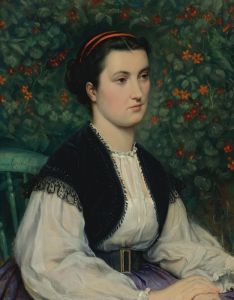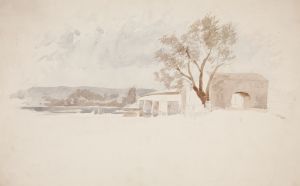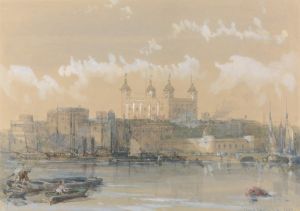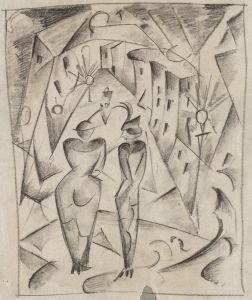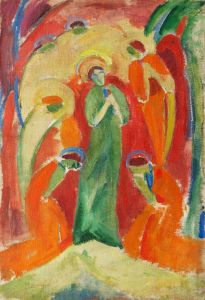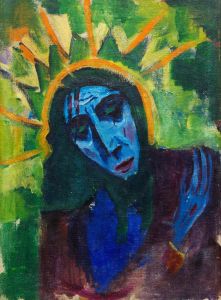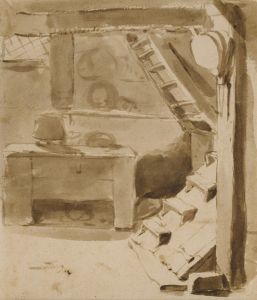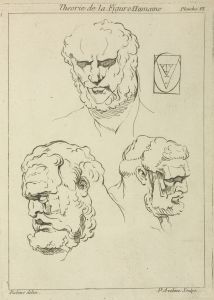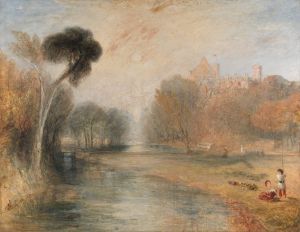
Burg Monschau
A hand-painted replica of Hermann Stenner’s masterpiece Burg Monschau, meticulously crafted by professional artists to capture the true essence of the original. Each piece is created with museum-quality canvas and rare mineral pigments, carefully painted by experienced artists with delicate brushstrokes and rich, layered colors to perfectly recreate the texture of the original artwork. Unlike machine-printed reproductions, this hand-painted version brings the painting to life, infused with the artist’s emotions and skill in every stroke. Whether for personal collection or home decoration, it instantly elevates the artistic atmosphere of any space.
Hermann Stenner was a German Expressionist painter known for his vibrant use of color and dynamic compositions. Born on March 12, 1891, in Bielefeld, Germany, Stenner was a promising artist whose career was tragically cut short by his death in World War I at the age of 23. Despite his brief career, Stenner left behind a significant body of work that continues to be studied and appreciated for its contribution to early 20th-century art.
One of Stenner's notable works is "Burg Monschau," a painting that captures the historic Monschau Castle located in the town of Monschau in North Rhine-Westphalia, Germany. This painting is a testament to Stenner's ability to blend architectural elements with the expressive qualities of his style. Monschau Castle, with its medieval origins, provides a rich subject for Stenner's exploration of form and color.
"Burg Monschau" exemplifies Stenner's approach to capturing the essence of a scene through bold brushwork and a vivid palette. The painting likely reflects the influence of the Expressionist movement, which sought to convey emotional experience rather than physical reality. Stenner's work often features a dynamic interplay of colors, and "Burg Monschau" is no exception, with its use of contrasting hues to bring the castle and its surroundings to life.
Stenner studied at the Academy of Fine Arts in Stuttgart, where he was influenced by the teachings of Adolf Hölzel, a pioneer of modern art education. Hölzel's emphasis on color theory and abstraction had a profound impact on Stenner's artistic development. Stenner was also associated with the avant-garde group Der Blaue Reiter, which included artists like Wassily Kandinsky and Franz Marc. This association further shaped his artistic vision, encouraging him to experiment with form and color.
The painting "Burg Monschau" is a reflection of Stenner's interest in capturing the spirit of a place. The castle, with its historical significance and picturesque setting, serves as an ideal subject for Stenner's expressive style. Through his use of color and form, Stenner transforms the architectural structure into a vibrant composition that resonates with the viewer.
Stenner's career was tragically short-lived due to his enlistment in the military during World War I. He was killed in action on December 5, 1914, in the Battle of Champagne. Despite his untimely death, Stenner's work continues to be celebrated for its contribution to the Expressionist movement and its exploration of color and form.
"Burg Monschau" remains an important piece within Stenner's oeuvre, showcasing his ability to merge architectural subjects with the emotional intensity characteristic of Expressionism. The painting is a reminder of Stenner's potential and the loss to the art world due to his premature death. Today, his works are held in various collections and continue to be studied for their innovative approach to early 20th-century art.





